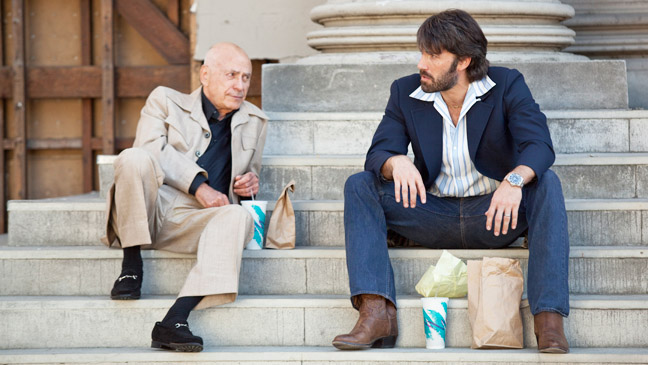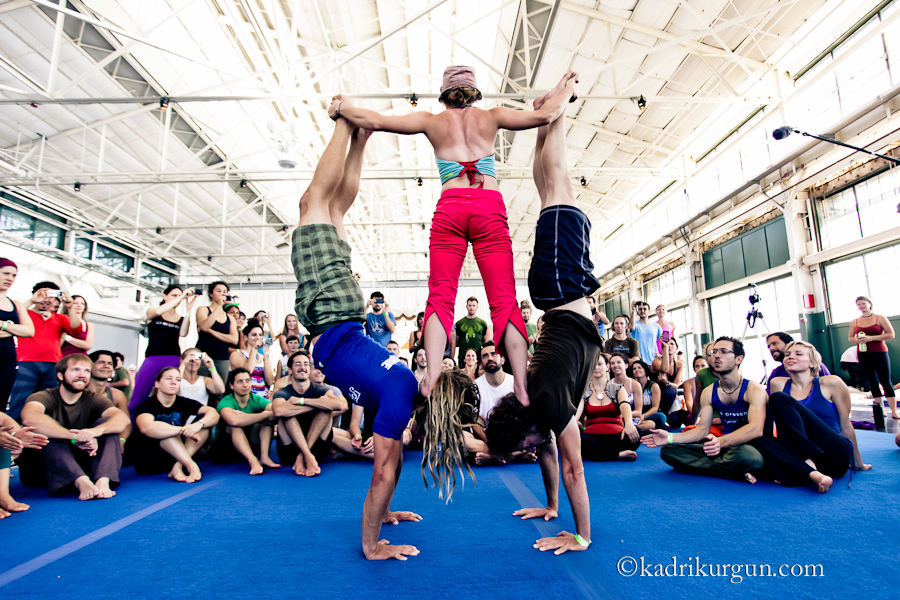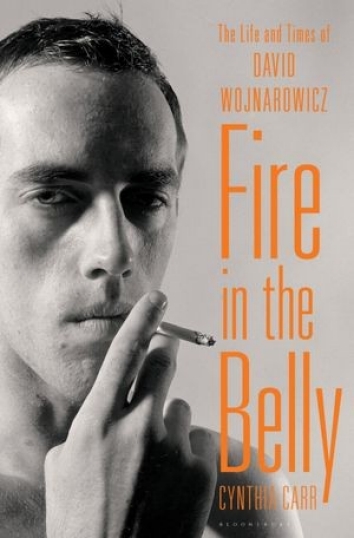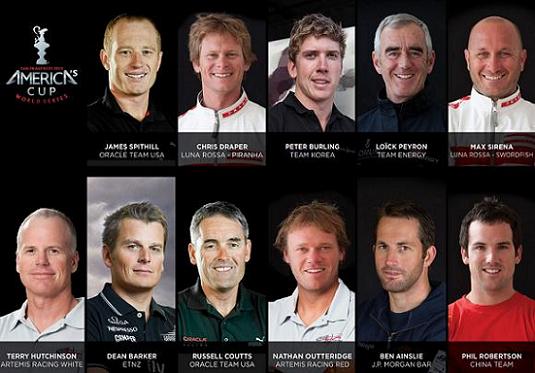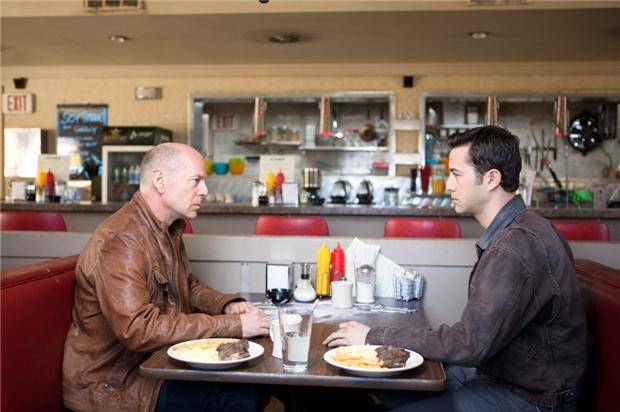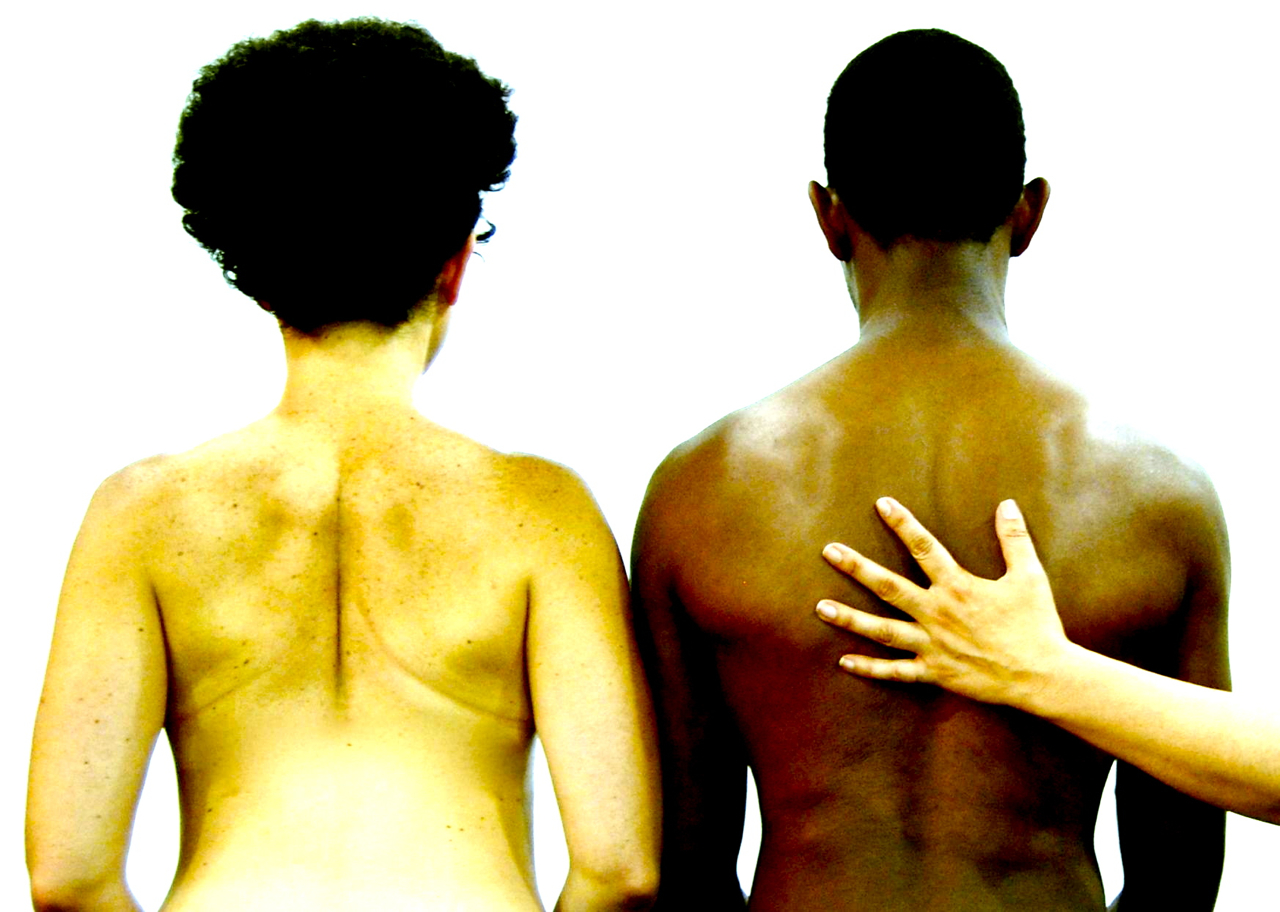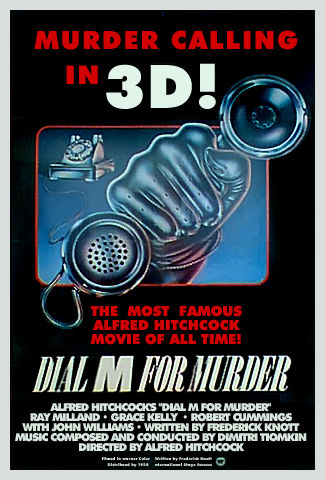Yes, it’s true: Argo is entertaining. Former cheeseball Ben Affleck has come a long way, baby.
Some cool local stuff this week: the Arab Film Festival, San Francisco Film Society’s Taiwan Film Days, and some seasonally-appropriate horror programming at the Roxie. Another Halloween-timed flick is the Ethan Hawke-starring Sinister, about a beastie that attacks people who’ve seen him on film, or something. So be warned.
More new releases, including a highly recommended sports doc about basketball in Lithuania, after the jump.
http://www.youtube.com/watch?v=0xvAIQ0B8NQ
Decoding Deepak And you thought your dad was a hard nut to crack. Decoding Deepak, directed by the son of New Age guru Deepak Chopra, offers insight into what it’s like to be the son of a man who’s built a career on commodifying spirituality, thanks to a string of best sellers and an Oprah seal of approval. Though the thirtysomething Gotham Chopra seems focused on catching his father off guard, Deepak offstage is exactly what you’d expect: a bit entitled and narcissistic, as many famous folks tend to be; obsessed with Twitter, as all media people tend to be; and “a guy who turns any mundane question into a talking point for a new book.” In other words, there are no shocking revelations here — though Deepak does offer an up-close view of some exceptionally galactic father-son tension. (1:23) (Cheryl Eddy)
http://www.youtube.com/watch?v=TPvLGfMBc64
Excuse Me for Living When the going of indie filmmaking grows economically rough, the moneyed and well-connected enter the field, swinging enriched resumes. Writer-director Ric Klass seems to have garnered experience in many a lucrative field, founding a private equity firm and real estate development company, teaching entrepreneurship at Georgetown University’s School of Business Administration, and working as a financial consultant to the Department of Housing and Urban Development. How does that multipronged background help when it comes to this ungainly throwback comedy, a glance to Old Hollywood with a nod to both the Borscht Belt and sitcom? Spoiled Ivy League-schooled addict Dan (Tom Pelphrey), a smart-assed semi-charmer-in-his-own-mind straight out of a Bret Easton Ellis epic, is about to toss himself off a bridge when he’s pulled from the brink by a passing cop and pushed into posh rehab Live Free or Die. His doctor (Robert Vaughn) prescribes meetings with his temple’s men’s group, populated by an array of accomplished raconteurs, and there he meets his doc’s pretty, scribbling daughter (Melissa Archer). Attraction ensues, with tangential broad comic forays that aspire to the snappy chatter of My Man Godfrey (1936) but somehow get bogged down in the dalliances of Dan’s dad (Wayne Knight) and his mother’s man-eating divorce lawyer Charlotte Davidson (Ewa Da Cruz). And despite a few promising chuckles and a glut of cameos, micro and macro, by actors such as Jerry Stiller, Dick Cavett, and Christopher Lloyd, Excuse Me’s cliched narrative, vaguely antiquated dialogue and score, and even staler hints of misogyny capsize this enterprise in dire need of an editor. (1:45) (Kimberly Chun)
Here Comes the Boom The makers of September’s Won’t Back Down might quibble with this statement, but the rest of us can probably agree that nothing (with the possible exception of Trapper Keepers) says “back to school” like competitive steel-cage mixed martial arts — particularly if the proceeds from the matches go toward saving extracurriculars at a down-at-the-heels public high school. Kevin James plays Scott Voss, a 42-year-old biology teacher at the aforementioned school, whose lack of vocational enthusiasm is manifested by poor attendance and classroom observations about how none of what the students are learning matters. He’s jolted from this criminally subpar performance of his academic duties, however, when budget cuts threaten the school’s arts programs, including the job of an earnest and enthusiastic music teacher (Henry Winkler) whose dedication Scott lazily admires. It seems less than inevitable that this state of affairs would lead to Scott’s donning his college wrestling singlet and trundling into the ring to get pummeled and mauled for cash, but it seems to work better than a bake sale. Less effective and equally unconvincing are Scott’s whiplash arc from bad apple to teacher-of-the-year; a percolating romance between him and the school nurse, played by Salma Hayek; and the script’s tortuous parade of rousing statements celebrating the power of the human spirit, seemingly cribbed from a page-a-day calendar of inspirational quotes. (1:45) (Lynn Rapoport)
http://www.youtube.com/watch?v=PDUKsLaZYjE
The Other Dream Team Despite all of the baseball and football fever crackling around town lately, there are some of us who wonder, “How long ’till basketball season?” Tide over your longing with this engaging doc, which is named for Lithuania’s 1992 Olympic basketball team but is really about how the sport has shaped the culture of a nation, even during its decades spent under Soviet rule. It begins with the USSR’s defeat of team USA at the 1988 games — at the height of the Cold War, and when most Americans assumed all Soviet athletes were more or less variations on the ruthless man-machine played by Dolph Lundgren in 1985’s Rocky IV. Of course, what people didn’t realize was that four of the five starters were Lithuanians — NBA-level players who were not allowed to leave the USSR to pursue their careers. Four years later, times had changed (one of the men is former Warriors standout Sarunas Marciulionis; another is Hall of Famer Arvydas Sabonis), and the Lithuanian team that competed in 1992 (with the financial backing of the Grateful Dead, hoops fans who applauded their courage) became an emotional symbol for the newly-independent country. The end result is a tale that’s equal parts sobering, rousing, and funny — and tie-dyed. (1:31) (Cheryl Eddy)
http://www.youtube.com/watch?v=tygJCY9vX-s
Seven Psychopaths Those nostalgic for 1990s-style chatty assassins will find much to love in the broadly sketched Seven Psychopaths. Director-writer Martin McDonough already dipped a pen into Tarantino’s blood-splattered ink well with his 2008 debut feature, In Bruges, and Seven Psychopaths reads as larkier and more off-the-cuff, as the award-winning Irish playwright continues to try to find his own discomfiting, teasing balance between goofy Grand Guignol yuks and meta-minded storytelling. Structured, sort of, with the certified lucidity of a thrill killer, Seven Psychopaths opens on Boardwalk Empire heavies Michael Pitt and Michael Stuhlbarg bantering about the terrors of getting shot in the eyeball, while waiting to “kill a chick.” The talky twosome don’t seem capable of harming a fat hen, in the face of the Jack of Spades serial killer, who happens to be Psychopath No. One and a serial destroyer of hired guns. The key to the rest of the psychopathic gang is locked in the noggin of screenwriter Marty (Colin Farrell), who’s grappling with a major block and attempting the seeming impossible task of creating a peace-loving, Buddhist killer. Looking on are his girlfriend Kaya (Abbie Cornish) and actor best friend Billy (Sam Rockwell), who has a lucrative side gig as a dog kidnapper — and reward snatcher — with the dapper Hans (Christopher Walken). A teensy bit too enthusiastic about Marty’s screenplay, Billy displays a talent for stumbling over psychos, reeling in Zachariah (Tom Waits) and, on his doggie-grabbing adventures, Shih Tzu-loving gangster Charlie (Woody Harrelson). Unrest assured, leitmotifs from McDonough plays — like a preoccupation with fiction-making (The Pillowman) and the coupling of pet-loving sentimentality and primal violence (The Lieutenant of Inishmore) — crop up in Seven Psychopaths, though in rougher, less refined form, and sprinkled with a nervous, bromantic anxiety that barely skirts homophobia. Best to bask in the cute, dumb pleasures of a saucer-eyed lap dog and the considerably more mental joys of this cast, headed up by dear dog hunter Walken, who can still stir terror with just a withering gaze and a voice that can peel the finish off a watch. (1:45) (Kimberly Chun)
http://www.youtube.com/watch?v=11yBPx-ymZA
Smiley This is a movie inspired by a website (specifically, 4chan’s /b/ discussion board) about a killer created by the internet (literally, formed as part of some kind of next-level, computers-are-becoming-self-aware shizz), starring a YouTube personality (Shane Dawson) — so the purposes of opening Smiley theatrically, which it’s probably better suited to online viewing, are mysterious. That’s about the only intrigue in Smiley, which is ostensibly about a college freshman (Caitlin Girard) coming off a nervous breakdown who believes she’s being targeted by the titular killer, who can be summoned by three-peating (like Bloody Mary or Candyman or Beetlejuice) the phrase “I did it for the lulz.” No real scares — just some gotcha! jumps and shrill music cues — or much else to recommend here, other than a weird performance by Roger Bart as a creepy philosophy prof, and Keith David, who cameos as a skeptical detective. (Almost worth watching just to hear David say “lulz” with those storied pipes. Almost.) (1:30) (Cheryl Eddy)
The Thieves The lure of a massive diamond with the theatrical name “Tear of the Sun” draws a ragtag crew of Korean and Chinese thieves — all of whom have shifty loyalties and motivations — to a casino in Macau, where the gem is hidden. Meanwhile, the local cops have their own angle, scheming to use the crooks to lead them to a mysterious master fence with a towering reputation for violence. It’s clear early on that this heist (complete with safecracking, gadgets, security-camera sabotage, gun battles, double-crosses, disguises, Spiderman-ing up and down building exteriors, etc.) won’t go off as planned — and payback for those who betray the others will be a bitch — but that’s part of the fun of this jazzy if derivative caper, already a huge hit in Korea. (2:16) (Cheryl Eddy)

